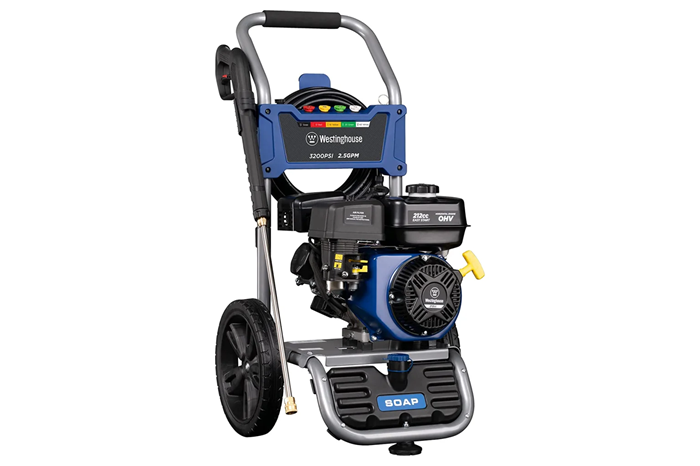Pressure washers are essential tools for professionals across various industries, from construction to automotive detailing. Selecting the right pressure washer is crucial for efficiency, safety, and achieving optimal results. This article delves into the types of pressure washers preferred by professionals, key features to consider, and top recommendations to guide your choice.
Understanding Pressure Washer Specifications
Before exploring specific models, it’s vital to comprehend the primary specifications that define a pressure washer’s performance:
PSI (Pounds per Square Inch): Indicates the water pressure delivered by the machine. Higher PSI levels are suitable for tougher cleaning tasks.
GPM (Gallons per Minute): Measures the water flow rate. A higher GPM means more water is used, leading to faster cleaning.
CU (Cleaning Units): Calculated by multiplying PSI by GPM, CU provides an overall measure of the machine’s cleaning power.
Types of Pressure Washers
Professionals typically choose between two main types of pressure washers: electric and gas-powered.
Electric Pressure Washers
Electric pressure washers are known for their quiet operation and lower maintenance needs. They are ideal for indoor use or environments where noise reduction is essential. However, they often offer lower PSI and GPM compared to gas-powered models, making them more suitable for lighter tasks.
Pros:
Quieter operation
Lower maintenance
No emissions
Cons:
Limited mobility due to power cord
Generally lower power output
Gas-Powered Pressure Washers
Gas-powered pressure washers are favored for their high mobility and robust power, making them suitable for heavy-duty tasks and outdoor use. They typically offer higher PSI and GPM ratings, essential for challenging cleaning jobs.
Pros:
High power and performance
Greater mobility
Suitable for heavy-duty tasks
Cons:
Louder operation
Regular maintenance required
Emissions may restrict indoor use
Key Features Professionals Look For
When selecting a pressure washer, professionals consider several critical features:
1. Durability and Build Quality
A robust frame, high-quality hoses, and corrosion-resistant materials ensure longevity, especially under frequent use.
2. Pump Type
Triplex plunger pumps are preferred for their durability and efficiency, offering longer life spans compared to axial cam pumps.
3. Portability
Features like pneumatic tires and ergonomic handles enhance mobility, crucial for large job sites.
4. Accessories and Nozzles
A variety of nozzle tips and compatible accessories, such as surface cleaners and extension wands, increase the machine’s versatility.
Top Pressure Washers Preferred by Professionals
Based on industry reviews and expert recommendations, here are some top pressure washers favored by professionals:
1. Simpson Cleaning PS3228 PowerShot
This gas-powered pressure washer delivers 3,300 PSI at 2.5 GPM, equipped with a Honda GX200 engine and a triplex plunger pump. It’s praised for its reliability and cleaning power.
Key Features:
Durable welded steel frame
10-inch pneumatic tires for easy mobility
Includes five quick-connect nozzle tips
2. Pressure-Pro EB4040HC Professional Pressure Washer
Offering 4,000 PSI at 4.0 GPM, this gas-powered unit features a Honda GX390 engine and a CAT triplex pump. Its aircraft-grade aluminum frame ensures durability without excessive weight.
Key Features:
Belt-drive system for reduced vibration
Thermal sensor to prevent overheating
50-foot high-pressure hose
3. DeWalt DWPW3000 Electric Pressure Washer
This electric model provides 3,000 PSI at 4.0 GPM, making it one of the most powerful electric pressure washers available. It’s suitable for professionals seeking a quieter and low-maintenance option.
Key Features:
Heavy-duty induction motor
Durable steel frame
Onboard detergent tank
Maintenance Tips for Professional Pressure Washers
To ensure longevity and optimal performance, professionals adhere to regular maintenance practices:
Routine Inspections: Check hoses, nozzles, and connections for wear and tear before each use.
Oil Changes: For gas-powered models, regularly change the engine and pump oil as per the manufacturer’s guidelines.
Proper Storage: Store the pressure washer in a dry, sheltered area to prevent damage from the elements.
Use of Clean Water: Ensure the water source is free from debris to prevent clogging and damage to the pump.
Safety Considerations
Operating a pressure washer requires adherence to safety protocols to prevent injuries and equipment damage:
Wear Protective Gear: Always use safety glasses, gloves, and appropriate footwear.
Avoid Electrical Hazards: Keep electric models away from water sources and ensure outlets are GFCI protected.
Be Cautious with High Pressure: High PSI levels can cause injuries; never point the nozzle at people or pets.
Conclusion
Selecting the appropriate pressure washer is a pivotal decision for professionals aiming to achieve efficiency and superior results. By considering factors such as power requirements, durability, and specific job demands, professionals can invest in equipment that not only meets their current needs but also stands the test of time. Regular maintenance and adherence to
Related topics:

